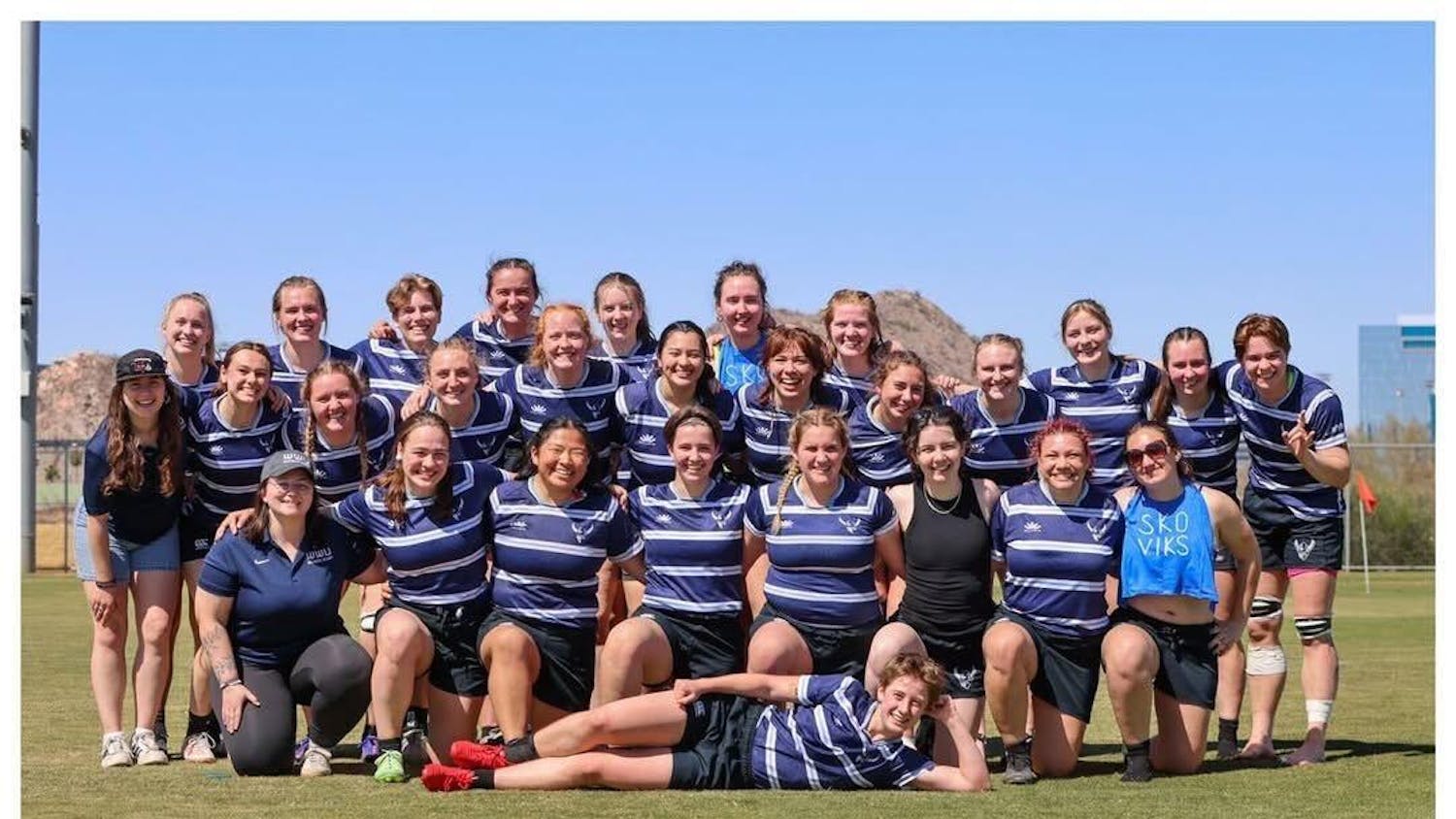At Western Washington University, the 30 blue lights that mark emergency call stations around campus are breaking down. The university is shifting to a mobile app available for emergency use.
As of this spring quarter, Western plans to introduce the new emergency alert app to students, tentatively called WesternSafe, which will be free to download, according to Western Chief of Police, Katy Potts.
“The blue-light phones use outdated, antiquated technology and cannot be repaired once they break; they were put in place long before every member of the campus community began carrying a phone with them personally at all times,” Potts said in an email.
Until Feb. 16, Western was using LiveSafe, an app with a similar purpose. With this new addition, “The platform, to be named WesternSafe, will include all the functionalities of LiveSafe and more, ensuring a comprehensive mobile campus safety app for the WWU community,” according to the university’s website.
Prestigious universities such as Duke University and Princeton University use a similar system created by the software developer, RAVE, which created LiveSafe.
While LiveSafe is currently inoperable, students must use other methods of requesting assistance, such as dialing 9-1-1 for emergency services or 360-650-3911 to contact University Police.
The campus also offers services such as the Public Safety Assistants, commonly called “Green Coats”, who escort people to places on campus upon request.
Caitlyn Wilson, a Western student working in administration as a tour guide, considers the campus to be relatively safe but raised some concerns.
The call boxes stationed around campus are physical and could be easier to identify than something on an app someone would need to download to see. The location of the boxes can be difficult to find, but all of them are marked by a blue light on the top of the poles they are attached to.
“One concern I have, just like with many things on campus, is making sure that everybody knows about [the app],” Wilson said.
Potts says that once the app is operable, there will be a full rollout advertising the free app to ensure students know about the resource.
Monica Jackson, the director of Emergency Management and Business Continuity at Western, said that, “This project is the result of a collaboration of campus partners including Emergency Management, University Police and University Communications to name a few. A broad range of additional campus stakeholders are involved in varying capacities.”
Despite a growing trend in safety apps, some campuses are unable to follow suit. At Washington State University, it’s an issue of cost.
Dawn Daniels, assistant chief of police at WSU, said they have looked into an app but at this time are not pursuing anything due to expense. However, she believes the time may be coming soon for the university to take a closer look at investing in a safety app.
Having a safety option at your fingertips could be beneficial in an emergency. But the reality is that not every college student may own a phone capable of having these types of apps on them. For this reason, a slower transition may be a better option.
“We are transitioning technology-wise to more cell phones and I always struggle with the sense of entitlement or privilege thinking that everybody has those cell phones,” Daniels said.
Currently, 10 out of the 30 emergency blue-light phones found throughout Western’s campus are out of order. While 20 are still operating, this app would act as a helpful addition to the callboxes.
Potts said the app will be an addition to the older technology as the call boxes become harder to maintain. Eventually, the boxes that are inoperable will be phased out.
Although there’s no plan to take down the boxes around campus, Potts said that as more of them break, a removal process may occur in the future.
First-year Western student Kailey Beaudoin said that people often forget that the callboxes exist.
According to Potts, the emergency buttons in the past 13 months have mostly been used for requesting escorts around campus or to ask police-related questions. Over 13 months, the boxes were activated 16 times. Of these 16 times, roughly a third were assumed by police to be prank calls upon arriving at the scene.
At WSU, Daniels said she has only ever answered two emergency box calls that were for emergencies.
If an emergency does occur, there need to be resources for students to rely on. The low-frequency usage of the emergency boxes may be indicative of a safer campus that Western provides, however, it doesn’t mean that everyone feels safe.
Beaudoin said she feels as though security isn’t guaranteed or regulated around dorms. When she does see campus security or University Police, they’re usually at the Red Square during protests.
Another first-year student, Kat Vieira Castro, said she feels safe when she’s on campus, frequently seeing the presence of University Police in the Red Square on her way to Carver Gym.
Zachary Connor, a business and sustainability major at Western, said steps are being taken to ensure a safer campus.
“Why we have a little bit of a gap between LiveSafe and this new app is because projects take longer than expected,” Connor said.
WesternSafe's proposed features include direct-connect emergency phone numbers, including University Police, mobile blue-light phone and emergency procedures, Jackson said.
According to Potts, the app will be released sometime in the spring of 2024.
Margaret Baumgartner (she/her) is a science reporter for The Front. She is majoring in news/editorial journalism and environmental science. Outside of reporting, Margaret enjoys hanging out in The Planet newsroom, eating apples or playing video games. You can contact her at margaretbaumgartner.thefront@gmail.com.
Kristina Mendoza (she/her) is a visual journalism major who is in her third year at Western Washington University. Her area of focus is magazine layout design. This quarter, she is a reporter for The Front. While in her spare time, she enjoys reading, painting and recreational activities. You can reach her at kristinamendoza.thefront@gmail.com.






